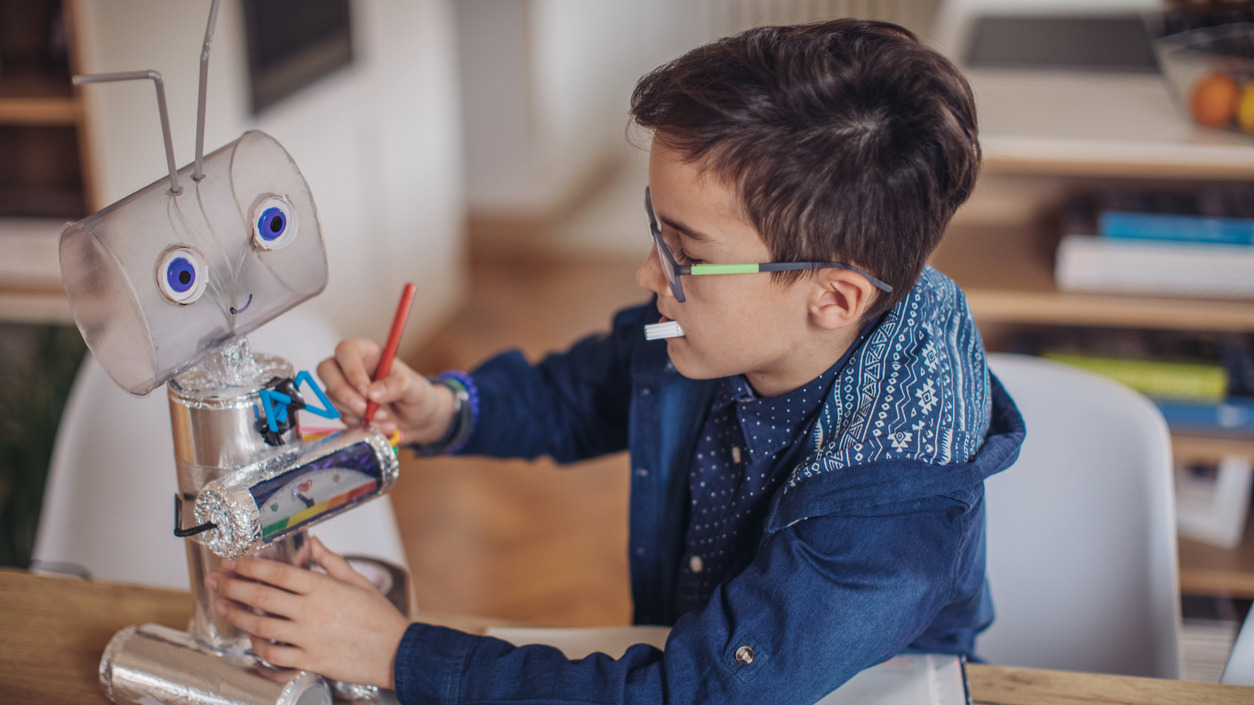
Summer break is right around the corner, and as a mom who works full time from home, but definitely can't afford those pricey summer camps, I'm already worried about falling into the screen time trap. Not all screen time is bad of course, but two hours a day can quickly turn into much, much more when your kids get bored and your never-ending to-do list doesn't leave you with much time to keep them from zoning out for too long.
More from MamásLatinas: Art projects you can make at home with your kids to develop their artistic side
The key is to give your kids time and space and permission to be creative! Creative kids can sometimes seem messy and wild, but there's something truly beautiful —inspiring even— about watching kids make something out of nothing and see their individual talents blossom when their minds have the freedom to explore all of their unique ideas. Here are some tips you can use to help cultivate your children's creativity.
Use YouTube for good.

Listen, we're modern moms and we absolutely should be using all of the modern tools at our disposal to help our kids. Instead of giving your kids free reign on YouTube, give them a set amount of time and instruct them to find examples of a certain type of art on YouTube, and then use what they find as inspiration to create their own masterpieces.
And Google, too...

Same thing goes for Google. We literally have centuries of art and design right at our fingertips every minute of every day. If your child shows an interest in a certain artist or art form, you can Google it to show them examples that will help inspire the kiddo's own art.
Ask questions.

When you're hanging out with your child, be sure to ask lots of open-ended questions to get those creative juices flowing. One small idea can spark a world of creativity in kids, and before you know it, your little one will be creating an entire made-up world with her toys based on something she thought of while chatting with mom.
Play mind games.

You can turn everyday things, like shopping for groceries or waiting for food at a restaurant, into games that make your kids think creatively. "For example, when waiting for a meal to arrive at a restaurant, take turns around the table coming up with all the things a napkin could be (hat, beard, mask, sculpture, origami, puppet, etc.)," author and former Director of Programs and Exhibits at the San Antonio Children’s Museum Susie Monday, tells Mother magazine. "Try the same game with a bar of soap in the bathtub (boat, brick, soap bubble machine)."
Try giving them writing assignments.

When your child is bored — and as long as writing doesn't feel like a huge chore — offer up a writing prompt and instruct him to use it to create his own story. Have him add drawings, if he wants. Open-ended assignments can bring out tons of creative ideas.
Incorporate household items.
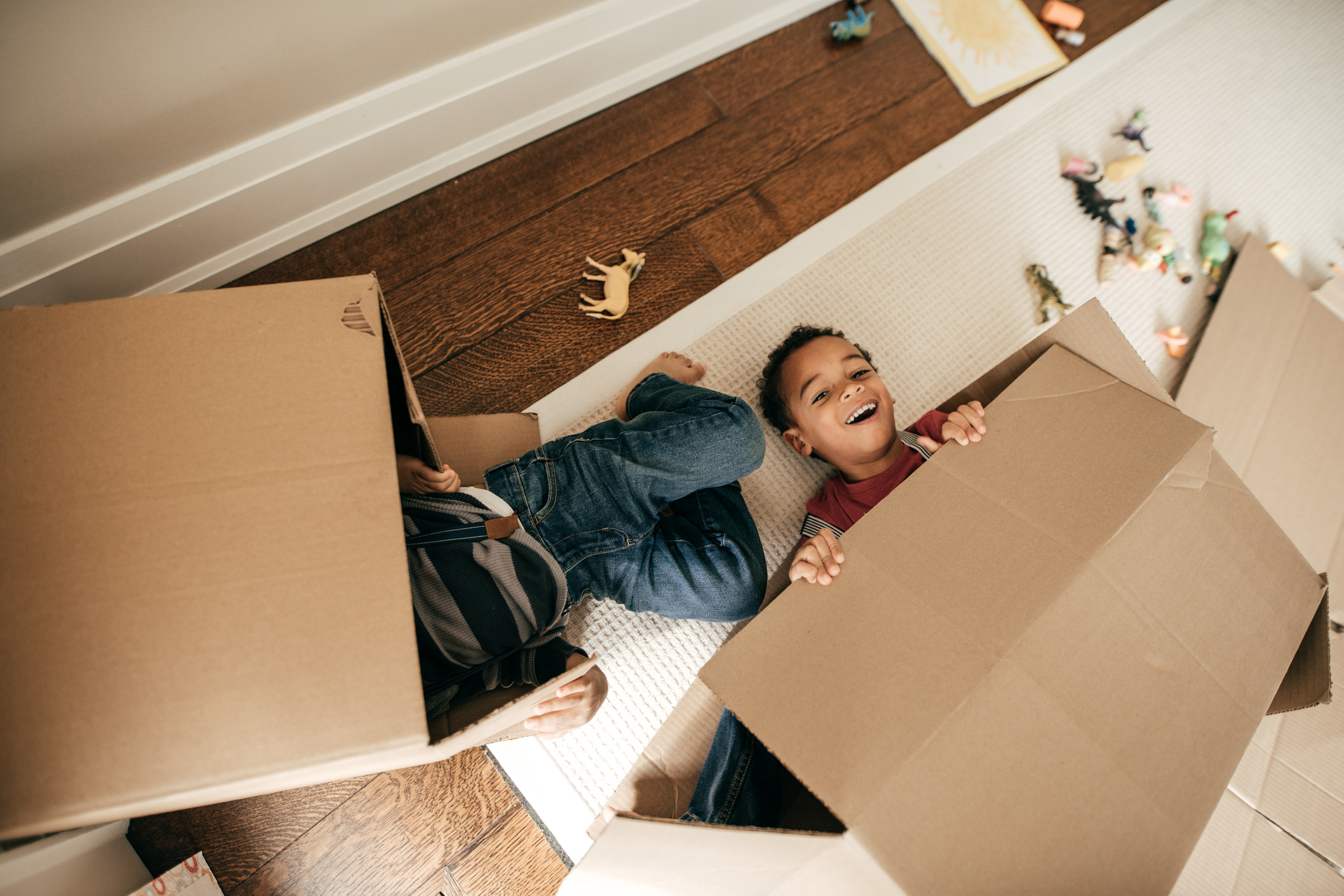
Keeping a bunch of items that you no longer need around the house might feel like you're turning into a hoarder, but having a collection of seemingly random items with open-ended uses around for your kids to play with, will force them to get creative. They can incorporate things like cardboard boxes, empty paper towel rolls, and plastic food containers into their toy collection, and let their imaginations run wild.
Enforce independent play time.
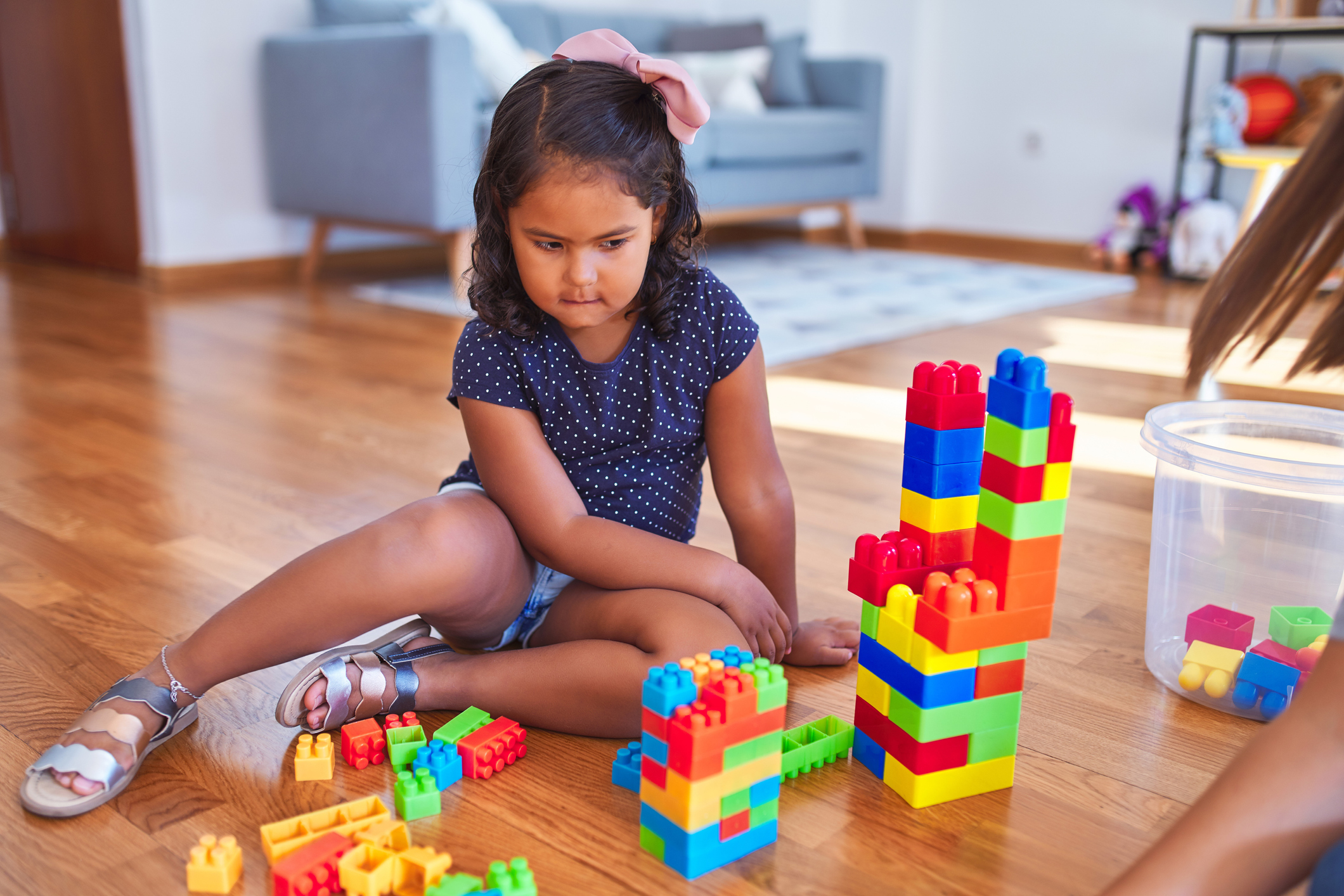
One of the best things you can do for your child's creativity — even from as young as infancy — is to enforce daily independent play time. Set aside a safe space for your baby, toddler, or child to play with her toys, books and art supplies for a minimum amount of time, and let her use her imagination to decide what to do.
With infants, this looks like a few minutes of tummy time or playpen time that increases each week. Toddlers and kids can play in their rooms with the door closed as long as it's been kid-proofed, and work up to a long stretch of independent play time.
Arrange play dates.
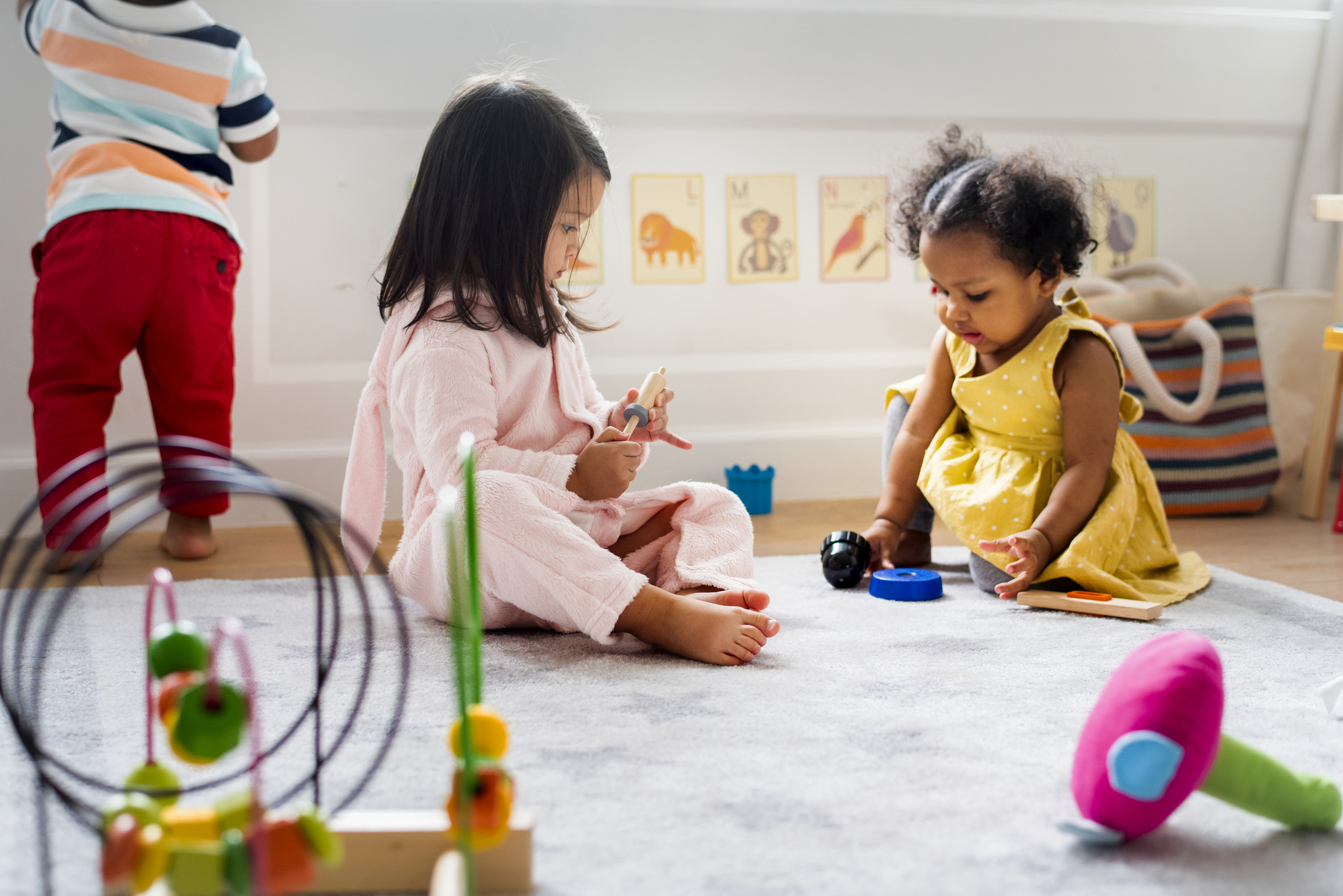
As a mom, organizing play dates can feel like a part-time job, but they can be seriously beneficial, even when it comes to cultivating creativity. Putting your child in the same space as another child of a similar age will encourage them both to entertain each other and create fun play scenarios based on each other's ideas.
Prioritize hands-on activities.
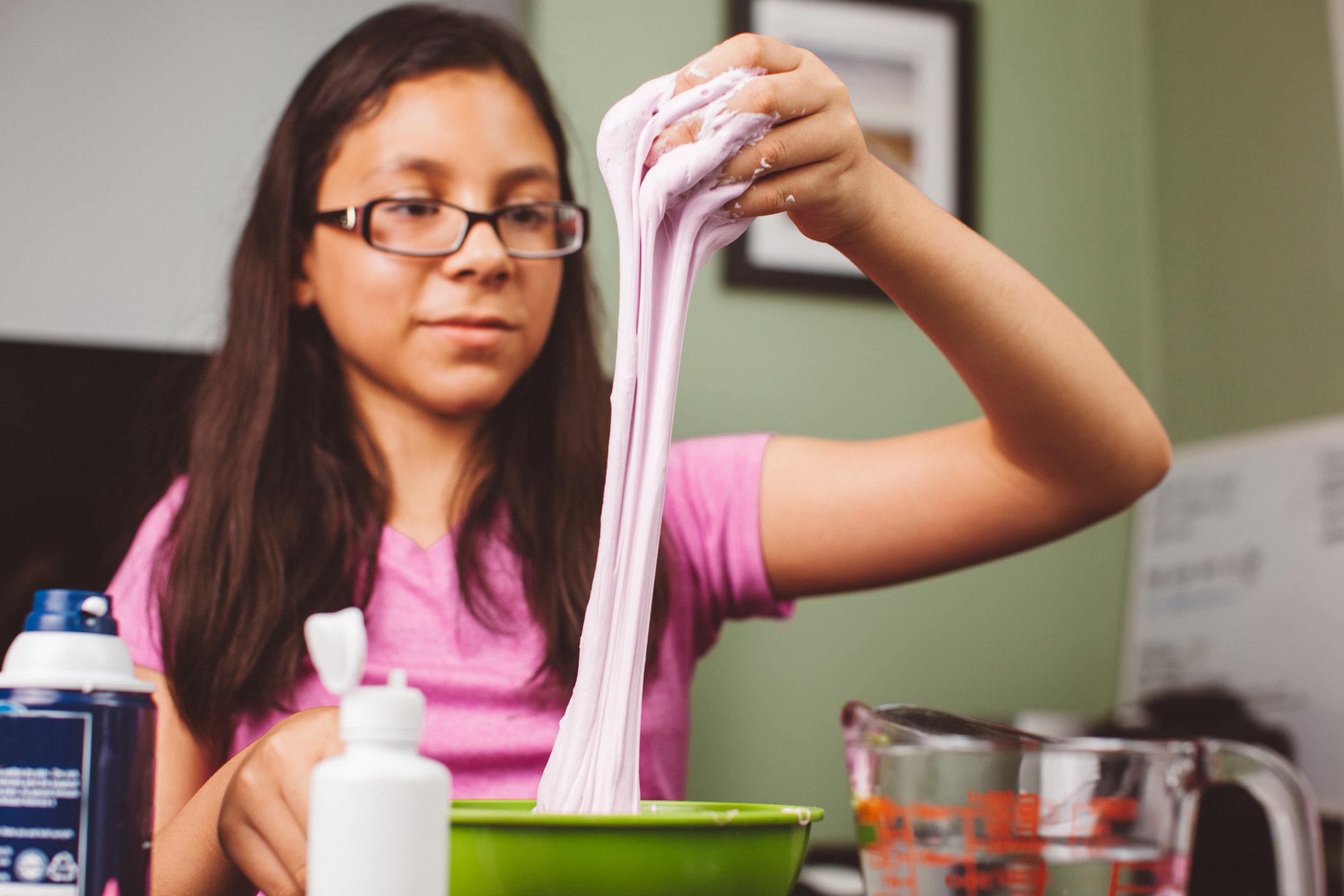
We know that tactile activities are the messiest. Letting your child loose with lots of different materials can mean stepping on building blocks, peeling up slime, and scraping up glue, but these kinds of materials allow your child to create anything and everything that their beautiful little minds can think of and give them the opportunity to get new ideas based on what they've already made.
Digital creativity counts, too.

Really, we mean it! Video games aren't all bad. Be discerning about what you allow your child to play and curate a collection of video games for her that allow her to be creative. Games like Minecraft and Terraria are engaging and fun and allow kids hours of open-ended creating.
Keep supplies on hand.
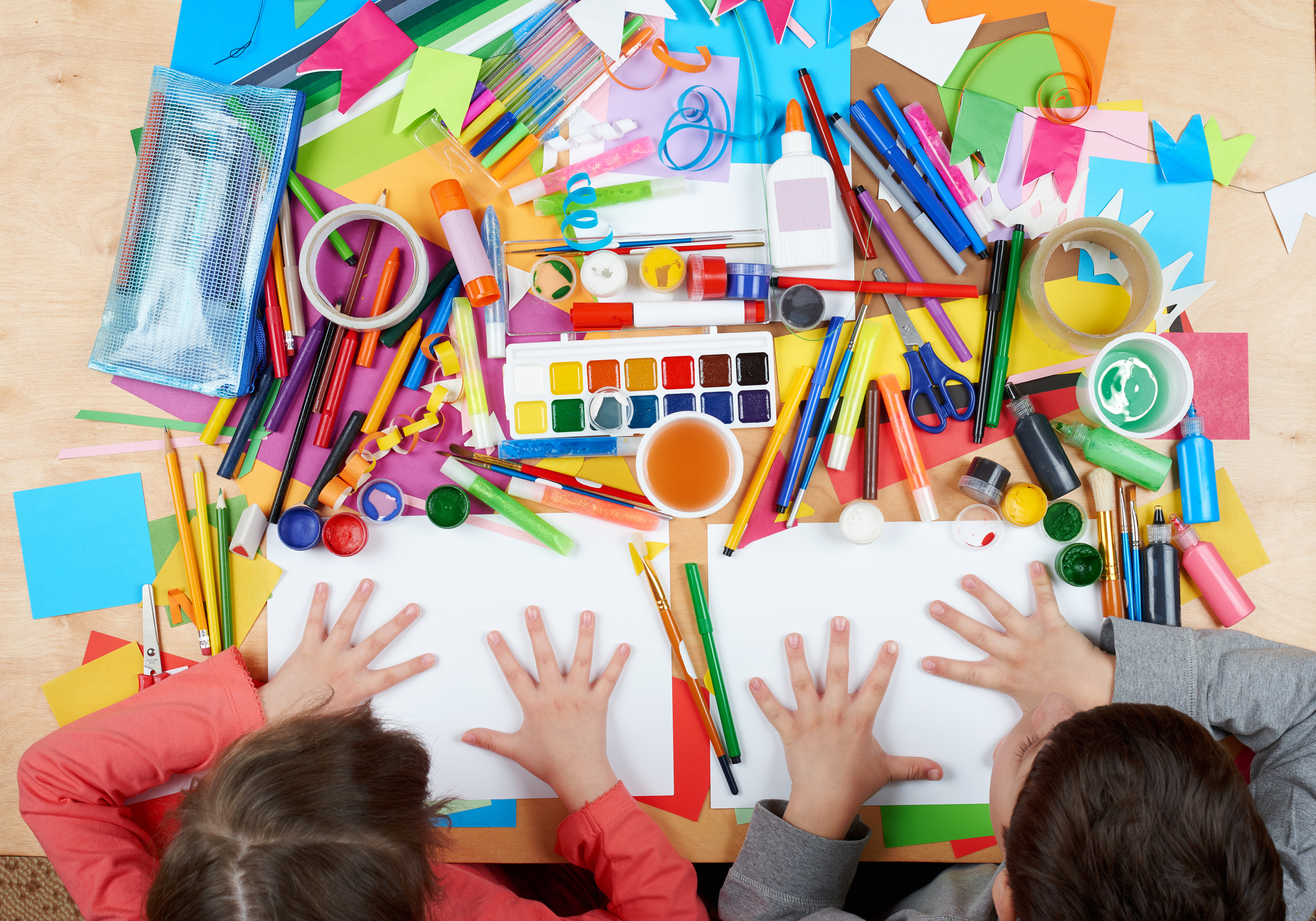
Toys, video games, and household items can all be used to help cultivate creativity, but having a well-stocked box of craft supplies is essential. Without materials to work with your kids' creativity will be limited. Keep liquid glue and glue sticks, different types of paper, various drawing, coloring and painting materials, tape, popsicle sticks, and other standard items stocked and easily accessible for your kids at all times.
Encourage meditation.

Give your child a prompt and encourage him to sit still and quiet and meditate on that prompt. The intentional focus will likely give him some wonderful ideas related to that prompt. "As much as there is outside," author Charlotte Reznick, PhD, told Mother. "I tell kids there’s that much and more on the inside."
Remember that creativity comes in many forms.

Every child is unique and each will have their own propensity for different forms of creativity. Some might like to sing or dance, others may prefer drawing or painting, and still others may like building things or writing code to create video games. Don't put your child in a box. Instead, let her take the lead when it comes to her creative endeavors. That said, it's still a good idea to encourage your child to try different types of creative play.
Teach the process.
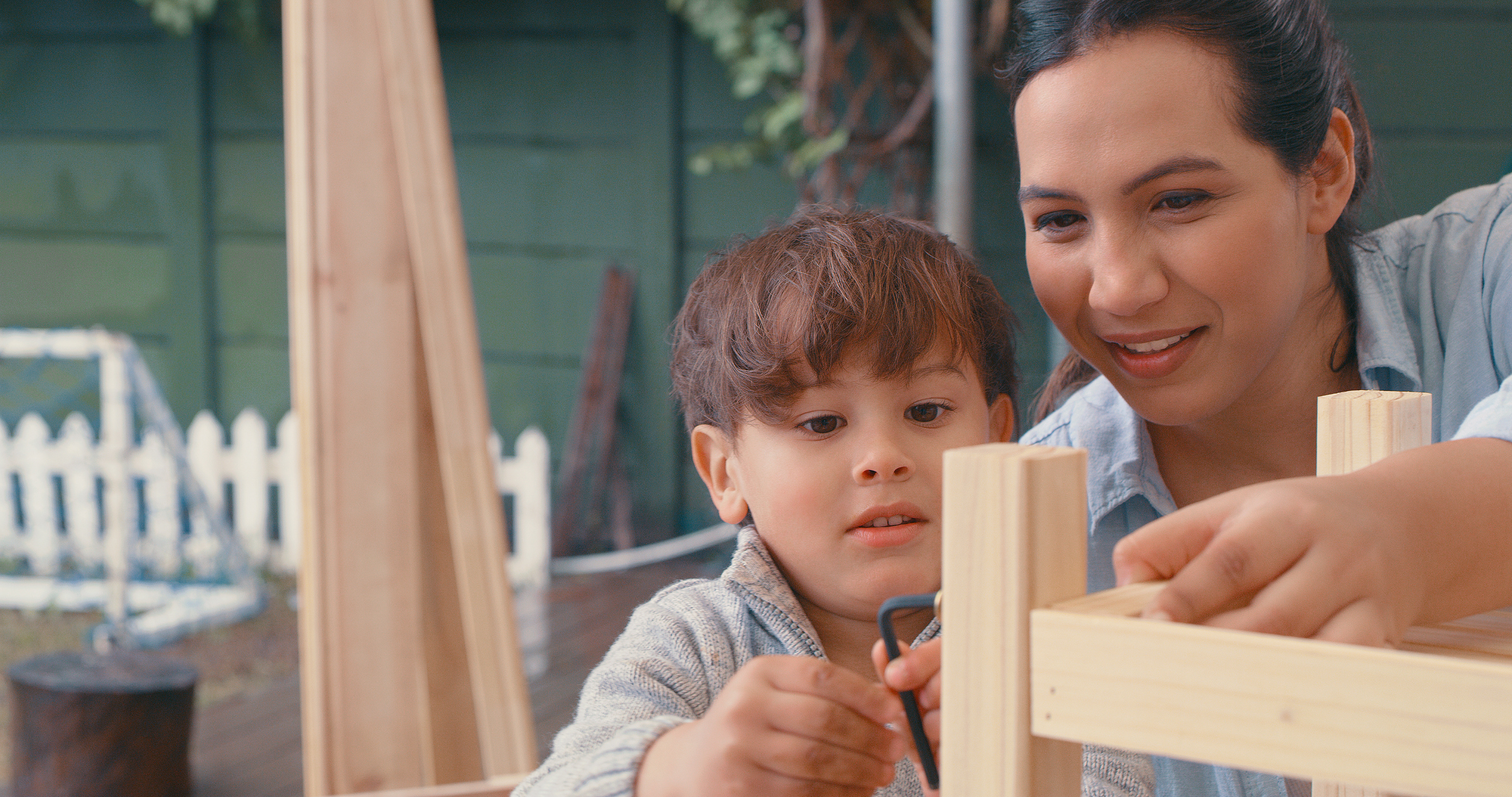
One amazing thing you can do for your kids is to actually teach them the process of how to do certain things. When you have the time, for example, to teach your children how to make a basic cake batter or how to build a cube with popsicle sticks, sit down and do it with them side-by-side, so they the process and can then do it on their own any time creativity strikes.
Make time.
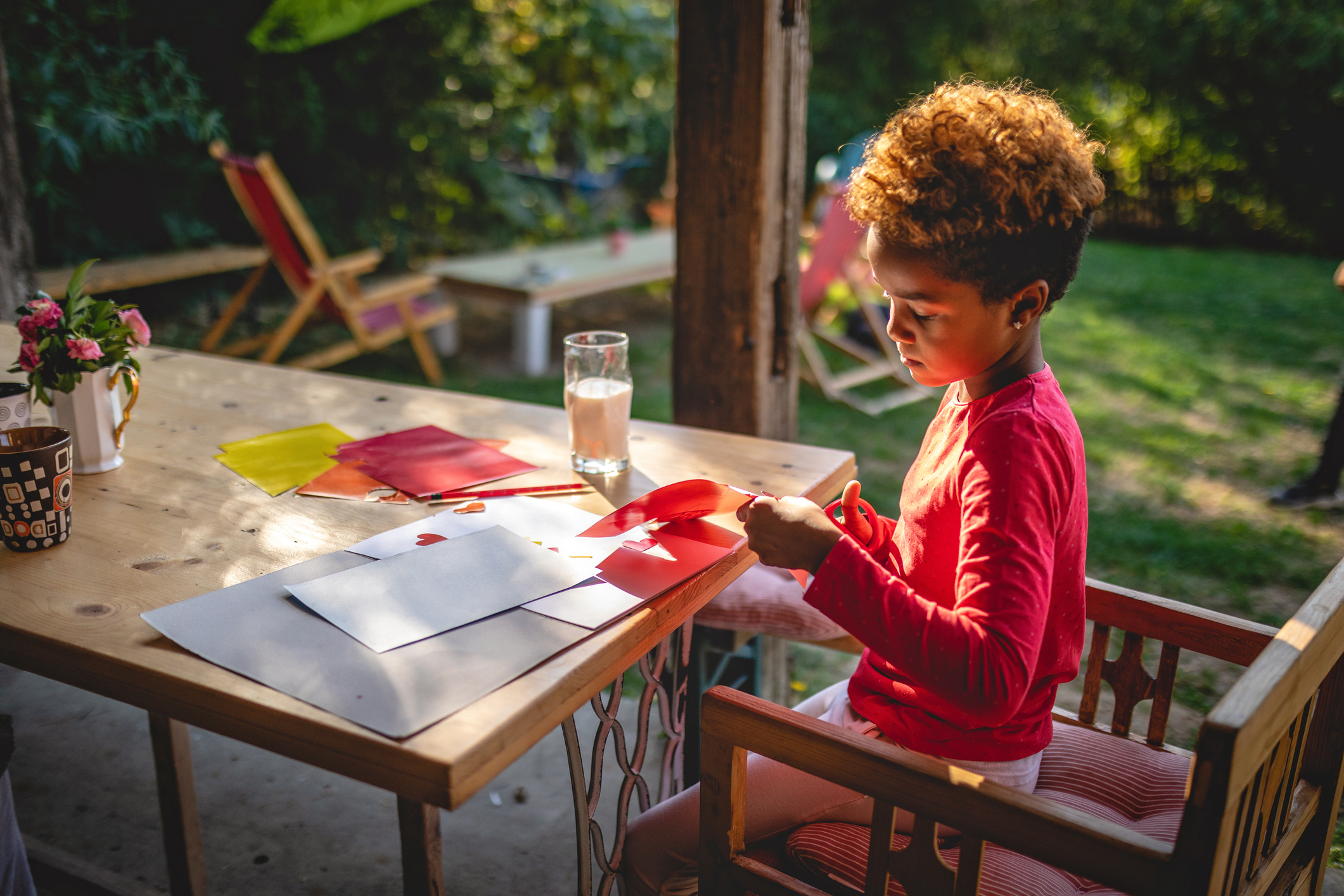
Nothing puts a damper on creativity like feeling rushed. Make sure your kiddo knows he doesn't have to start and finish a project all in one sitting. It's OK for him to start and return to a project as often as needed. If you know he will have to stop at a certain time, give him advance notice in an age-appropriate way, so he doesn't get upset when it's time to call it quits for the day. Consider having a designated area where the kids can keep unfinished works, as well.

